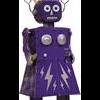In the spring of 2007 contaminated pet food killed thousands of cats and dogs in America. “Pet Food Politics” by Marion Nestle, one of America’s leading scholars of food politics, provides a vivid and detailed account of the affair and its aftermath. The book appears to be aimed at pet-lovers. Ms Nestle is shown hugging a dog in the jacket photo, and there are glowing quotes from the editors of Whole Dog Journal and The Bark. But it deserves a wider readership. Ms Nestle uses the scare, which probably killed around 4,500 animals, to illuminate the connections between the food supplies of humans, farm animals and pets, and to highlight the broader failings of food regulation.
The outbreak was caused by shipments of wheat gluten and rice-protein concentrate from China that had been adulterated with melamine and cyanuric acid, two cheap chemicals that are rich in nitrogen. Since the usual test for protein in animal feed just measures the level of nitrogen, these chemicals can be added to far more expensive feed ingredients without anybody noticing. Both chemicals can be tolerated in small amounts but are harmful in large doses, and they are even more dangerous when combined, producing crystals in the urine and causing potentially fatal kidney damage.
The contaminants also found their way into the human food chain, since “salvaged” pet food (left over from the production process) is fed to chickens and pigs, and wheat gluten also goes into feed for fish and farm animals. The concentrations involved were much lower there, but Ms Nestle’s point is that pet food was merely the part of the food-supply system where the wider problem of contamination and lack of monitoring became apparent.
The researchers who pieced together what went wrong are Ms Nestle’s heroes; her villains are the regulators and the bosses of the pet-food companies who were reluctant to look into what caused the problem and to recall their products. This put pet-owners (or “pet guardians” as some of them strangely prefer to call themselves) in the agonising position of being unsure which foods to feed their pets.
For the complete news item, please visit http://www.economist...ory_id=12051443
http://www.extension...fm?newsid=28635
- Home
- Sponsors
- Forums
- Members ˅
- Resources ˅
- Files
- FAQ ˅
- Jobs
-
Webinars ˅
- Upcoming Food Safety Fridays
- Recorded Food Safety Fridays
- Upcoming Hot Topics from Sponsors
- Recorded Hot Topics from Sponsors
- Food Safety Live 2013
- Food Safety Live 2014
- Food Safety Live 2015
- Food Safety Live 2016
- Food Safety Live 2017
- Food Safety Live 2018
- Food Safety Live 2019
- Food Safety Live 2020
- Food Safety Live 2021
- Training ˅
- Links
- Store ˅
- More








